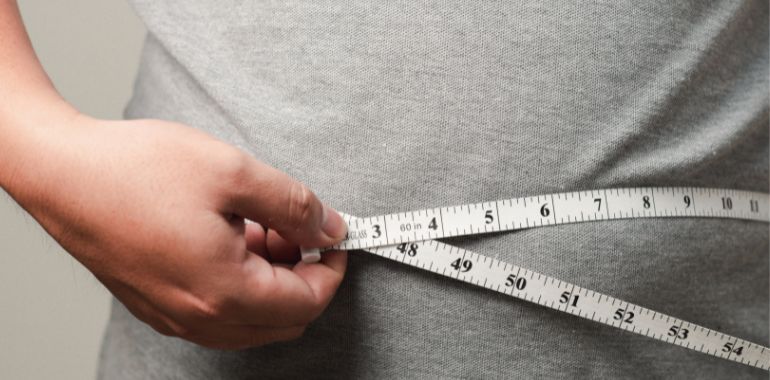Table Of Contents
Combining a low carb diet with intermittent fasting has become increasingly popular for those seeking effective weight loss and health improvement strategies. Both approaches have strong scientific backing individually, and when paired together, they can create a powerful synergy for metabolic health. This comprehensive guide explores how these two dietary approaches work together, what benefits you can expect, and how to implement them effectively in your daily life.
Whether you’re just starting your health journey or looking to optimize your current routine, understanding the science behind these approaches and how they complement each other can help you achieve your goals more efficiently.
Can You Eat Carbs While Intermittent Fasting?
Yes, you absolutely can eat carbs during intermittent fasting! Intermittent fasting (IF) involves alternating between periods of eating and fasting based on your chosen IF method. During fasting periods, you’ll consume only water or other non-caloric beverages, while during eating windows, you’re free to include carbs in your meals.
Intermittent fasting macros don’t require you to avoid certain foods or track caloric intake, which sets it apart from most diets. It means that IF can be practiced in parallel with different meals and lifestyles that you may prefer.
Carbohydrates serve as the primary energy source for your brain and muscles, making them valuable for maintaining both physical and mental performance. They also provide essential nutrients like B-vitamins, iron, magnesium, and potassium that support overall health.
How Many Carbs Should I Eat While Intermittent Fasting? Calculate Your Daily Norm
According to the Dietary Guidelines for Americans, carbohydrates should make up approximately 45-65% of your total daily calorie intake.
A typical 2,000-calorie diet translates to about 225-325 grams (or 900-1300 calories) of carbohydrates per day.
When combining intermittent fasting with carb consumption, I recommend these key principles:
1. Focus on whole, unprocessed carbohydrates such as fruits, vegetables, whole grains, and legumes.
2. Distribute your carbohydrate intake evenly across your eating window. This allows keep stable blood sugar levels and provides sustained energy.
Low Carb Mediterranean Diet with Intermittent Fasting
The Mediterranean diet and intermittent fasting both offer significant health and weight loss benefits when practiced together. The Low-Carb Mediterranean Diet focuses on consuming foods with healthy fats, lean proteins from meat and fish, abundant vegetables, and limited carbohydrates. This approach has been linked to positive effects on heart health and reduced inflammation.
When combined, these dietary approaches enhance nutrient density and metabolic function. This pairing can lead to sustainable, healthy outcomes through improved eating awareness, appetite control, and general wellbeing.
Keto and Intermittent Fasting for Losing Weight
Combining a keto diet with intermittent fasting can work exceptionally well for weight loss and efficient fat burning. The keto diet’s primary characteristic is its high-fat, moderate-protein, and very low-carb approach, which induces ketosis and allows your body to use fat instead of carbohydrates as its main fuel source.
These dietary approaches complement each other by boosting metabolic rates to burn fat while regulating blood glucose levels. This combination can support long-term performance through sustained energy levels, reduced cravings, and promotion of healthier food choices.
Your Special Keto Intermittent Fasting Meal Plan
- Fasting window: 8 PM – 12 PM
- Eating window: 12 PM – 8 PM
*Daily carbohydrate intake should ideally range between 20 to 50 grams of carbs to promote ketosis.
**For weight loss, it’s recommended to consume around 1500 – 2000 calories per day.
***Steer off grains, sugars, high-carb fruits, starchy vegetables, and condiments that are high in sugar.
Here’s your first low carb intermittent fasting plan ready to go:Day Lunch 12:00 PM Snack 1 3:00 PM Dinner 5:00 PM Snack 2 7:30 PM Monday Grilled chicken salad with avocado, walnuts Greek yogurt (no sugar added) with raspberries Grass-fed steak with roasted Brussels sprouts and bacon Celery sticks with almond butter Tuesday Baked salmon with spinach and arugula salad (low sugar dressing) A handful of mixed nuts Grilled shrimp with steamed broccoli and butter Keto fat bombs Wednesday Grilled chicken salad with olives, avocado Greek yogurt with chia seeds Grass-fed steak with Brussels sprouts and bacon Celery sticks with almond butter Thursday Baked salmon with spinach and cucumber salad A handful of mixed nuts Grilled shrimp with steamed broccoli and butter Keto fat bombs Friday Grilled chicken salad with avocado, walnuts Greek yogurt with raspberries Grass-fed steak with roasted Brussels sprouts and bacon Celery sticks with almond butter Saturday Baked salmon with arugula salad and cherry tomatoes A handful of mixed nuts Grilled shrimp with steamed broccoli and butter Keto fat bombs Sunday Grilled chicken salad with olives, avocado Greek yogurt with chia seeds Grass-fed steak with Brussels sprouts and bacon Celery sticks with almond butter
Paleo and Intermittent Fasting: What are the Reasons for Pairing?
Combining the Paleo diet with Intermittent Fasting creates a highly effective strategy! The Paleo diet is based on consuming natural, unprocessed foods similar to what our ancestors ate, including meat, fish, and nutrient-dense carbohydrates from fruits, vegetables, nuts, and seeds. This approach improves digestion and effectively reduces inflammation while regulating blood sugar levels.
Together, these dietary approaches support a nutrient-dense, whole-foods eating style alongside the “eat—”entrain” model of biology and metabolism. This combination promotes healthy long-term outcomes by aligning with beneficial metabolic changes recommended by nutritional experts.
Read also – No Excuses Allowed: 75 Hard Challenge Diet Plan
Low Carb and Intermittent Fasting Results from Real-Life: What Can You Expect?
Many people have shared remarkable transformations through these dietary approaches. For example, Albert Wisdom lost an impressive 195 pounds by combining keto dieting with intermittent fasting. His journey, documented in Men’s Health, highlights how this lifestyle change dramatically improved his overall wellbeing.
Eric Power, a well-known author who practices intermittent fasting, shares numerous success stories on his platform. One notable account involves someone who eliminated sugar and followed a low-carb diet, losing 8 pounds in just two weeks.
Beyond physical changes, many report mental and emotional benefits. A story featured in Nutrition Journal describes how combining the DASH diet with intermittent fasting helped a woman stop binge eating and lose 75 pounds, resulting in increased energy and confidence.
Integrating Whole30 and Intermittent Fasting Together: How This Might Affect You?
Whole30 is a 30-day elimination diet that removes sweeteners, alcohol, grains, legumes, soy, and dairy to reset metabolic patterns and reduce inflammation. Intermittent Fasting complements this by restricting food consumption to specific times, which benefits insulin management and metabolism.
This combination promotes better food choices and natural hunger regulation through mindful eating practices, potentially supporting long-term health benefits.
Atkins and Intermittent Fasting: Is It Effective for Weight Loss?
The Atkins diet paired with Intermittent Fasting creates a compatible and effective weight loss strategy. Atkins is a popular low glycemic index approach that significantly limits daily carbohydrate intake, causing the body to metabolize stored fat for energy.
Combining these dietary approaches enhances fat oxidation and maintains stable energy levels, supporting long-term weight loss efforts.
Both diets are characterized by proper food consumption and eating patterns that are healthy and can be followed over the long run.
Can You Do Intermittent Fasting and Low Carb at the Same Time? Experts’ Opinions
Intermittent fasting and low-carb diets can be highly compatible, often enhancing each other’s benefits. IF follows a periodic eating pattern that adjusts meal timing from normal habits, while the keto diet minimizes daily carbohydrate intake.
Is low carb intermittent fasting safe? When combined, these two approaches work synergistically together.
- IF can increase insulin sensitivity, making it easier for your body to switch to burning fat for fuel—a process already initiated by low-carb diets.
- Both approaches can improve markers like blood sugar levels and lipid profiles and reduce inflammation.
- Low-carb diets can stabilize blood sugar and reduce cravings, making the fasting periods in IF more manageable.
How to Master Effectively Intermittent Fasting and Low Carb Diets Together?
1. How to do low carb intermittent fasting? First, select an intermittent fasting schedule that fits your lifestyle.
- 16/8 Method. Fast for 16 hours, eat during an 8-hour window. Commonly, this means skipping breakfast and eating from noon to 8 PM.
- 5:2 Method. Eat typically for 5 days, and restrict calories to around 500-600 on two non-consecutive days.
- 24-Hour Fast. Fast from dinner one day to dinner the next, once or twice a week.
Here are additional strategies to successfully implement both approaches:
2. Prepare meals and snacks ahead of time to avoid reaching for unhealthy options.
3. Use batch cooking to save time and ensure you have compliant meal ideas ready.
4. Drink enough water throughout the day to help manage hunger and support bodily functions.
5. Pay attention to hunger cues and adjust your eating window if necessary.
6. Don’t ignore signs of extreme hunger or fatigue; modifying your approach is okay.
7. Engage in regular exercise to boost metabolism and support weight loss.
8. Keep track of what you eat and how you feel in a food diary.
9. Regularly check your weight and take note of other health markers like energy levels and mood.
10. Before starting any new diet or fasting regimen, consult a healthcare provider, especially if you have underlying health conditions.
Low Carb Intermittent Fasting Food List – General Recommendations from Dietitians
Proteins
- chicken breast
- turkey
- beef (lean cuts)
- pork (tenderloin, chops)
- lamb
- salmon
- tuna
- cod
- shrimp
- scallops
- eggs
Plant-based Proteins
- tofu
- tempeh
- seitan (wheat gluten)
Veggies
- spinach
- kale
- Swiss chard
- arugula
- romaine lettuce
- broccoli
- cauliflower
- brussels sprouts
- cabbage
- zucchini
- bell peppers
- asparagus
- green beans
- cucumbers
- mushrooms
Dairy & alternatives
- Cheddar
- Mozzarella
- Parmesan
- Feta
- Goat cheese
- Greek yogurt (unsweetened)
- Cottage cheese
- almond milk (unsweetened)
- coconut milk (unsweetened)
- soy milk (unsweetened)
Nuts and seeds
- almonds
- walnuts
- pecans
- macadamia nuts
- chia
- flaxseeds
- pumpkin seeds
- sunflower seeds
Good Fats (beneficial additions for high protein diet options)
- Olive oil
- Coconut oil
- Avocado oil
- avocados
- olives
Beverages
- plain water
- sparkling water
- mineral water
- black coffee
- green tea
- herbal teas (unsweetened)
- broths (bone, veggie)
Herbs & spices
- basil
- cilantro
- parsley
- Rosemary
- thyme
- turmeric
- cinnamon
- paprika
- cumin
- garlic powder
Condiments
- mustard (no added sugars)
- Mayonnaise (preferably homemade; check labels for no added sugars)
- hot sauce (check labels for no added sugars)
- Pesto
- Tahini
Also, read – What is 16/8 Intermittent Fasting?
3 Super Benefits of Low Carb Diet and Intermittent Fasting for Your Body
1. Intermittent Fasting With Carbs for Weight Loss
This approach allows you to eat only during specific hours, which can significantly aid weight loss. By limiting your eating window, you naturally reduce calorie intake, and your body begins using fat stores for energy during fasting periods.
Research shows that combining intermittent fasting with low-carb diets can enhance these effects. Reducing sugar intake leads to lower insulin production, which encourages your body to use stored fat for energy. This combination typically results in more effective and faster weight loss.
2. Good Digestion & Gut Health
A low-carbohydrate diet can be gentler on your digestive system compared to high-carb meal plans. By reducing processed foods and sugars, you may experience improvements in gut health. Many people find they no longer suffer from digestive issues like bloating, constipation, or diarrhea.
Intermittent fasting can also support your digestion by giving your gut time to rest and recover during fasting periods. The food choices we make directly impact the bacteria in our bodies—our gut microbiome—which plays a crucial role in overall health and wellbeing.
3. Greater Vitality
Many people discover increased energy levels when following a combined low-carb and intermittent fasting approach. Several factors contribute to this effect, including better blood sugar management, improved insulin sensitivity, increased fat utilization for energy, and enhanced sleep quality.
Limiting carbohydrates and sugars helps prevent energy crashes. Additionally, intermittent fasting encourages your body to produce ketones, which provide a consistent energy source throughout the day.
Summing Up Of Carb Fasting Way
The low-carb intermittent fasting approach centers on developing a mindful relationship with food and understanding how your body responds to different dietary practices. Including low-carb periods along with physical activity boosts metabolism, increases energy levels, improves brain function, and supports weight loss.
Remember that everyone’s path to optimal health involves unique factors. What works wonderfully for one person might not suit another. The most appealing aspect of this combined approach is its flexibility and personalization. Don’t feel overwhelmed—start gradually and experiment to find what works best for your individual needs.
My name is Barbara Kovalenko. I hold a Bachelor's degree in Human Nutrition from Bogomolets National Medical University in Ukraine and a Master's degree from Boston University in the United States. Over the past few years, I have gained valuable experience as a nutritionist and have since decided to share my knowledge and expertise with a wider audience. Currently, I am working as a nutritional consultant with the Lasta app.









